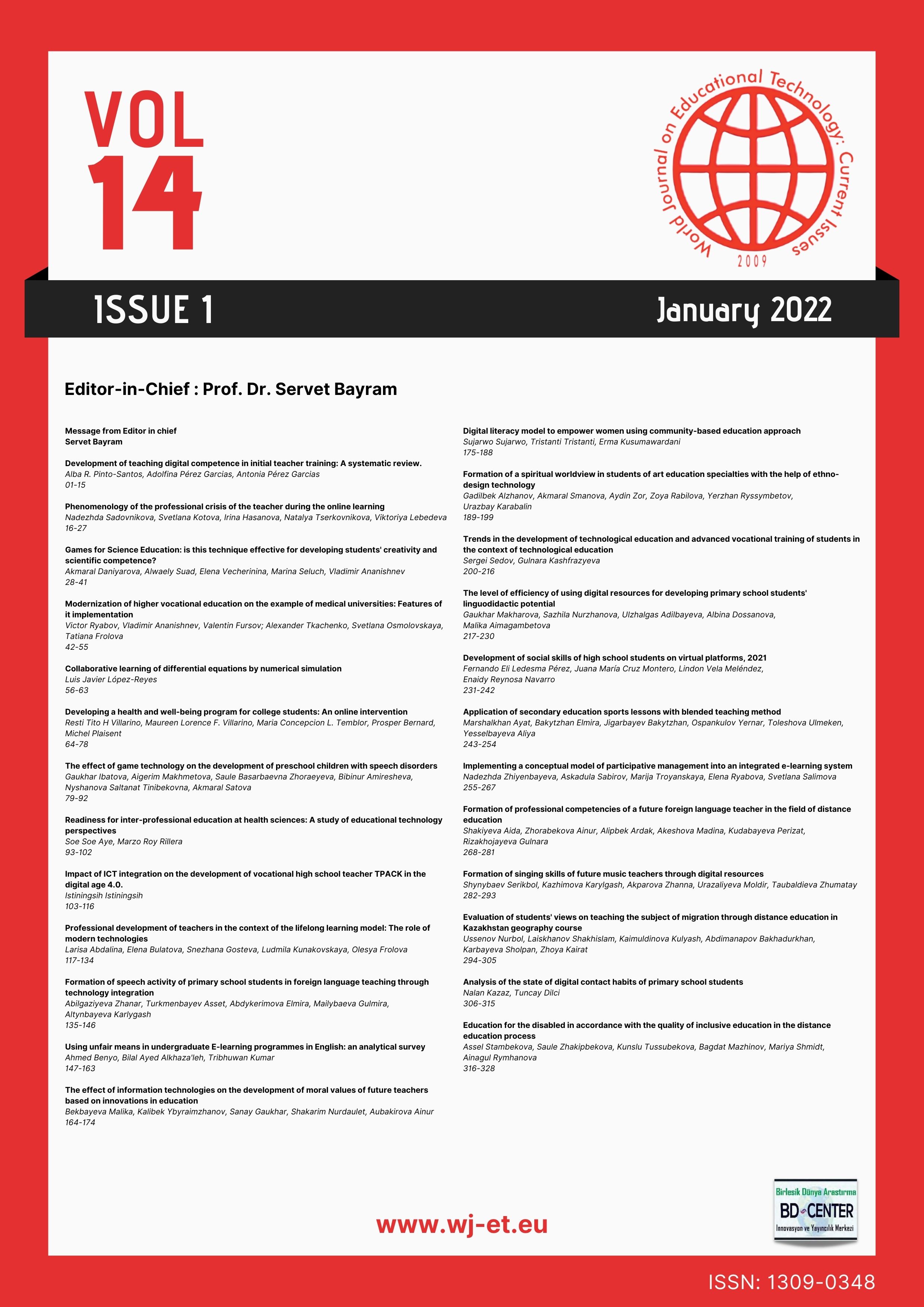Formation of professional competencies of a future foreign language teacher in the field of distance education
Main Article Content
Abstract
The aim of this study is to evaluate the opinions of teacher candidates and teachers related to foreign language teaching through distance education and to make forward-looking recommendations in line with these views. The study group consists of 30 teacher candidates who studied foreign language teaching at various universities in Kazakhstan during the 2020–2021 academic year and 35 English teachers who teach English in secondary schools in Almaty. The study was carried out within the scope of qualitative research and research data were collected with two semi-structured interview forms created by the researcher. The data obtained from the research are categorised by content analysis. As a result of the study, teacher candidates found distance education more inefficient in education than formal education and inadequate to provide distance education. Teachers, on the other hand, saw distance education as advantageous in terms of saving time and space, disadvantaged by student motivation, teacher inexperience and technical glitches. As a result of the research, it has emerged that urgent solutions are needed to eliminate the need to provide a separate education on distance education to teacher candidates and teachers, student motivation and technical problems.
Keywords: distance education, advantages of distance education, disadvantages of distance education, foreign language teacher candidates, foreign language teachers, teacher opinions
Downloads
Article Details

This work is licensed under a Creative Commons Attribution 4.0 International License.
World Journal on Educational Technology: Current Issues is an Open Access Journal. The copyright holder is the author/s. Licensee Birlesik Dunya Yenilik Arastirma ve Yayincilik Merkezi, North Nicosia, Cyprus. All articles can be downloaded free of charge. Articles published in the Journal are Open-Access articles distributed under CC-BY license [Attribution 4.0 International (CC BY 4.0)].
Birlesik Dunya Yenilik Arastirma ve Yayincilik Merkezi (BD-Center)is a gold open-access publisher. At the point of publication, all articles from our portfolio of journals are immediately and permanently accessible online free of charge. BD-Center articles are published under the CC-BY license [Attribution 4.0 International (CC BY 4.0)], which permits unrestricted use, distribution, and reproduction in any medium, provided the original authors and the source are credited.
